Audio Technica ATH-R70x Review: A Gateway to Soundstage
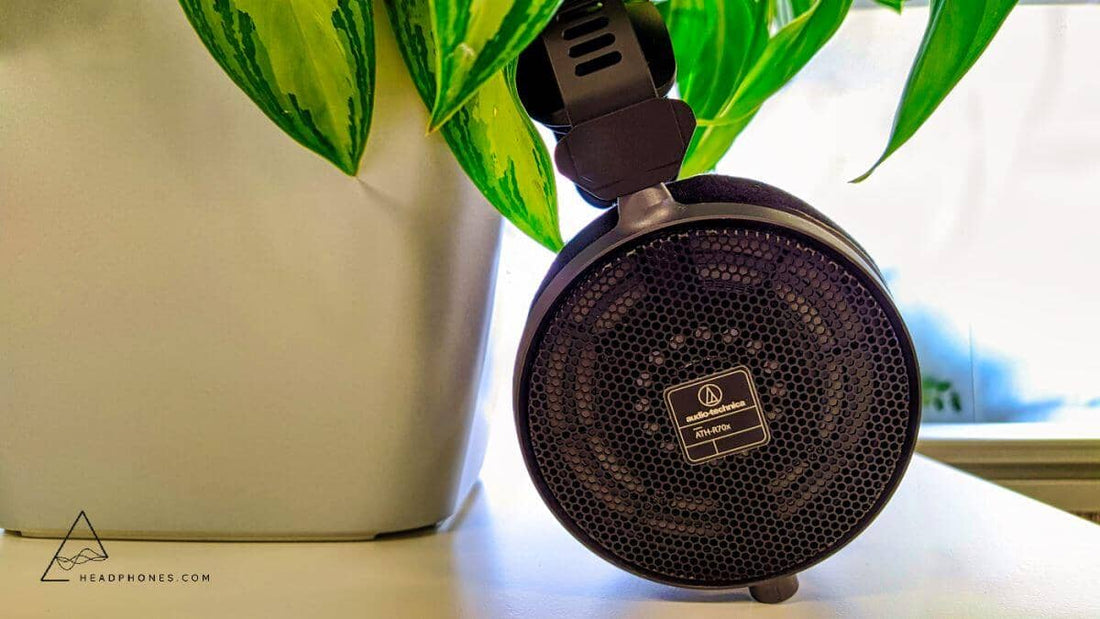
Review written by @Fc-Construct
Review unit on loan from headphones.com
Introduction
Over seven years ago while on a trip to Japan, I bought my very first pair of headphones, the Audio Technica ATH-A900x. Audio Technica shortly after released the $350 ATH-R70x as a neutral, open-back competitor to the venerable Sennheiser HD600. Ever since, it's always been on my wishlist as a headphone to listen to. Today, that opportunity has finally come courtesy of headphones.com. Let’s see if it was worth the wait.
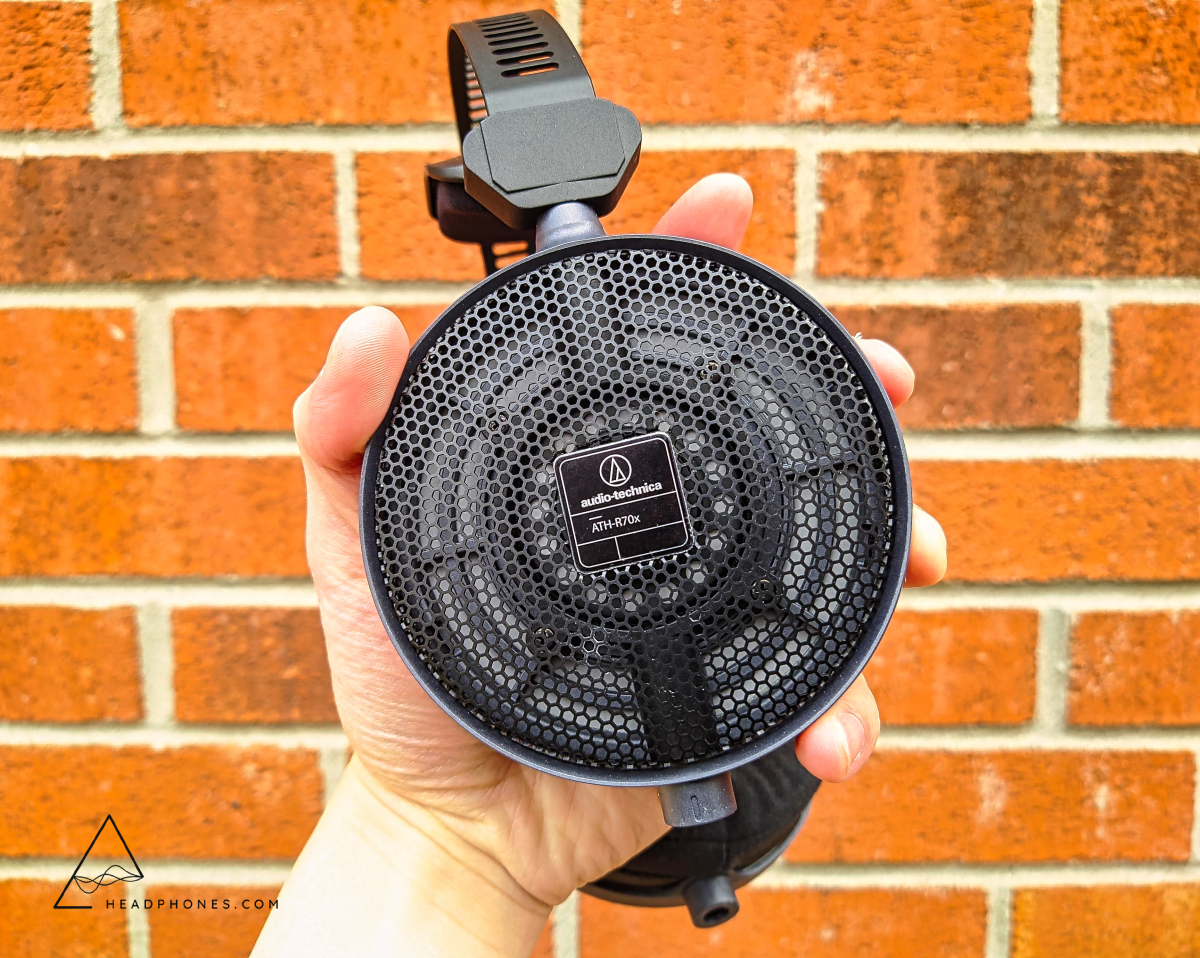
Build and Comfort:
The first thing I noticed when taking the R70x in hand was just how light it is. Yet it doesn’t feel cheaply made in the slightest thanks to a well-engineered mix of plastic and metal in its build. Of note is the R70x’s implementation Audio Technica’s infamous 3D wing design in place of a headband. Though the wing system has been criticized in the past for being ineffective on certain Audio Technica models, I find it works great here. There’s more than enough tension in the springs to keep the headphone from sagging, especially when combined with the lightness of its design. Hurray for no headband pressure sores!
Speaking of comfort, the R70x is quite good. The light weight is awesome, and so is the relatively light clamping force. It’s also one of the more open-feeling and breathable headphones, taking longer to get overly warm on the ears than something like the HD600. However, the cups only swivel horizontally and not vertically. Clamp force is thus distributed with a little more force on the top of the cups just above the ears compared to the bottom, providing solid support to hold up the headphone. Of note is that the circular cups are a little on the small side. It shouldn’t be a problem for anyone unless you have freakishly large ears.
I do have one final, minor gripe about the R70x. While the left and right are marked on the inside just above the cups, there is no external marking for which side is L or R. It’s not color coded nor are there any raised bumps. Just a little annoying if you want to pick them up quickly and put them on and not know if the stereo channels are correct.
Frequency Response and Tuning
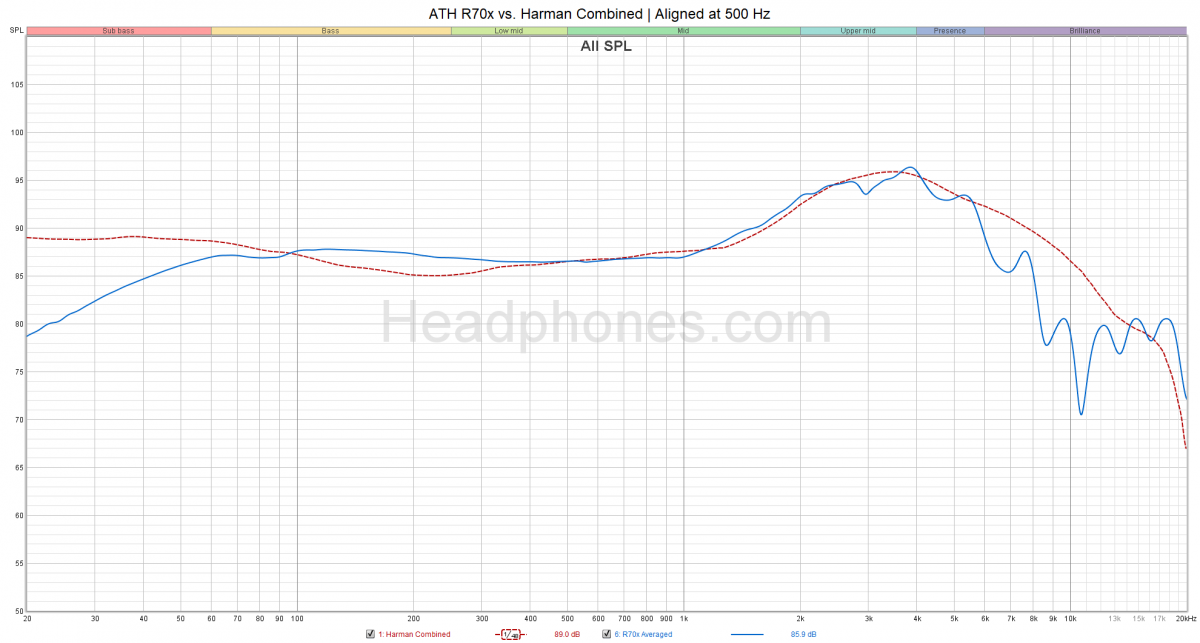
Measurement of the ATH-R70x on an industry standard GRAS 43AG measurement rig. The dotted black line represents the Harman target, a reference frequency response developed using consumer preferences. The blue line is how the headphone in question measures. Effectively, this shows how significantly the headphone’s frequency response deviates from the target. Note however that the target is highly smoothed and strict adherence to the Harman target is not necessary for a headphone to sound good.
As we can see from the graph, the ATH-R70x has quite a neutral-reference style tuning. Specifically, the upper mids structure is right on point and gives vocals a highly natural tonality to it. You’ll note a subbass roll-off below the 60 Hz mark that is typical of more moderately priced open back headphones, precluding the R70x from having a heavy bass response. The upper treble is nicely extended here though I wouldn’t call the R70x a super airy headphone.
As with most neutrally-tuned headphones, it sounds good. In fact, I’d say it’s a wholly inoffensive headphone. The mid treble is relatively recessed and smoothed out, making the R70x a non-fatiguing listen. Combined with the minor bump in the upper bass/lower mids, the R70x has a slightly warm tilt to it. However, I do think that it also makes the R70x sound a little undefined. Personally, I think I’d prefer if the mid treble was filled in to follow the Harman curve to give it a sharper sound.
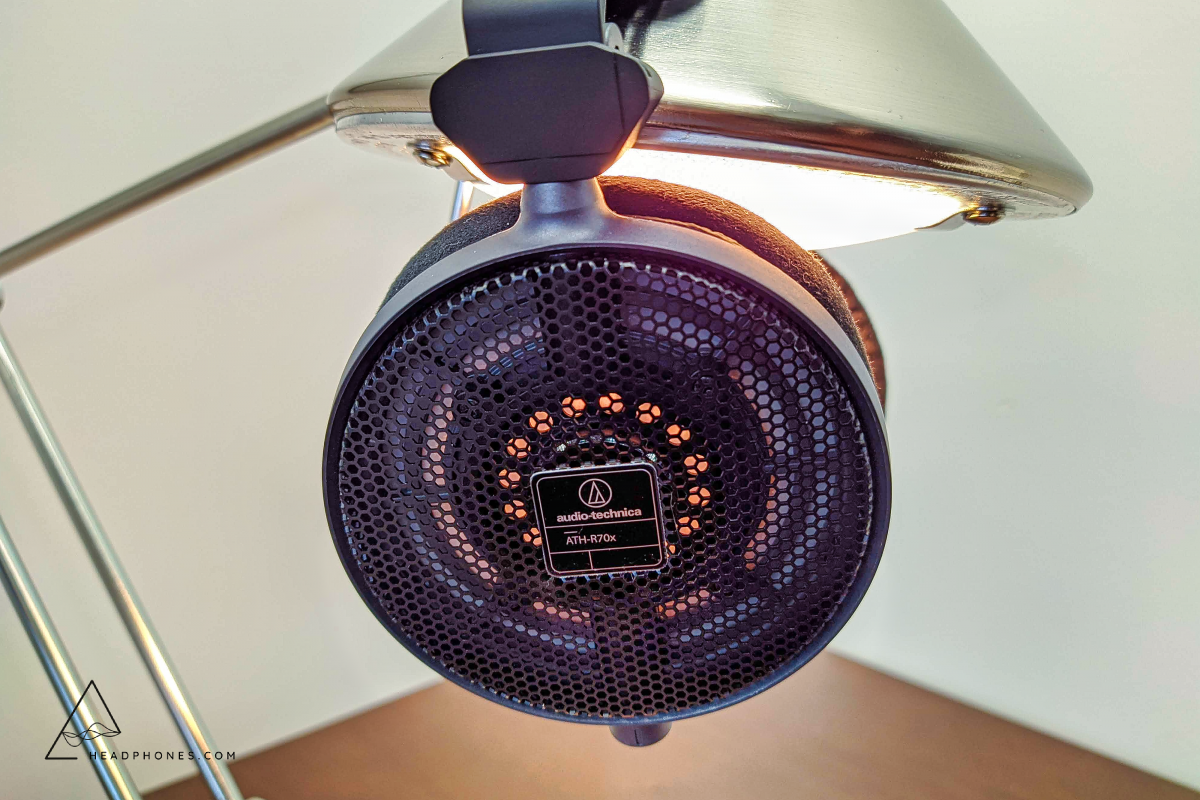
Instrument Notes
Drums
The “undefined” sound of the R70x is most noticeable in the drums. Specifically, in the kick and the toms there is a slight bloominess to the notes that gives them a blurred image. An audiophile term I’ve heard thrown around to describe the bass is “wooly” and while I’m not sure if I fully agree with that, I can certainly see why some people would describe the R70x as that. The R70x is in a bit of a weird spot as its subbass roll-off prevents it from having a deep, rich bass response. Yet it also doesn’t have a tight midbass punch to compensate. As such, while drums are quite tonally accurate and responsive on the R70x, they do occasionally sound flat to me. On the upside, I don’t have any real complaints with snare and hats/cymbals. Maybe the snare could have a snappier crack but that’s my preferences speaking. For the hats and cymbals, the R70x handles their delicate timbre effortlessly, managing to prevent them from being fatiguing while still maintaining the brilliance in their notes.
Guitars/Strings
For the bass guitar, the issue of note definition is much better. While I do think notes could be sharper, there’s enough punch here with the pluck of each note. As with the drums, it doesn’t have the ability to dig for deep subbass notes. Acoustic and electric guitars are nicely done. They have a hint of warmth and plenty of upper mids to energize electric guitar riffs and licks or brighten the strum of the acoustic guitar.
Vocals
The midrange structure of the R70x makes vocals a highly pleasant and easy-to-listen experience for both male and female vocals. With its tamed mid treble, vocal sibilance or harshness aren’t an issue on the R70x. Personally however, I do wish that there was a bit more energy in that mid treble region to give vocals a greater breathiness to them. As it is right now, vocals can come off as slightly stuffy given the combination of the minor lower mids bump and recession in the mid treble. I suppose that’s the trade-off made for a non-fatiguing experience.
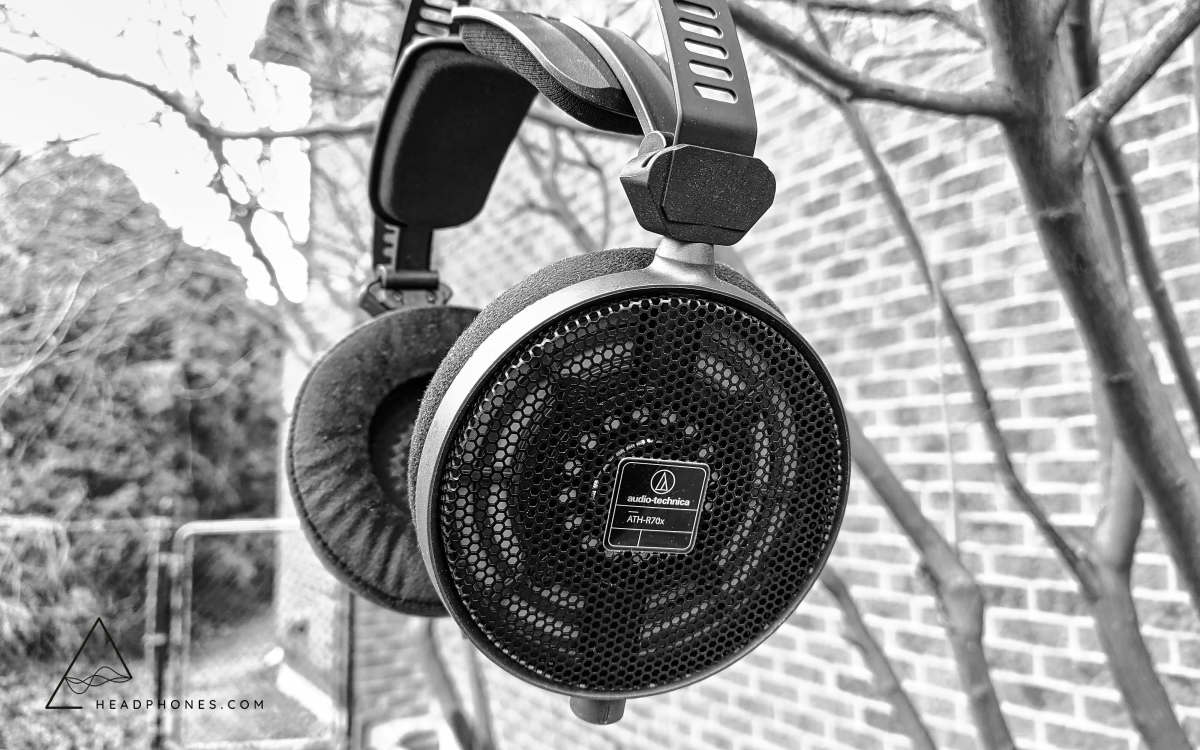
Presentation
The staging of the R70x is where this headphone separates itself from its contemporaries. It feels extremely open for a dynamic driver headphone, more akin to the egg-shaped planars from HiFiMan. The soundstage of the R70x is more immersive than massive. Instead of merely increasing the width, the R70x takes a more holistic approach by proportionately increasing height and depth to surround your head with sound. The sense of space is excellent.
Better than its soundstage is its imaging. In fact, I’d even say the imaging is the R70x’s strong suit. Generally speaking, I find that for most headphones, the center image is pushed forward to a point right between my eyes. But with the R70x, the center image is pulled back into the middle of my head and diffused outwards into the soundstage. This is most noticeable with vocals and gives the R70x its immersion as noted above. For instruments not strictly centered in the mix, the stereo accuracy is outstanding. There’s a high level of precision and nuance in instrument placement within the soundstage. The overall effect is coherent and natural. Once again, it’s immersive. Or at least, as far as headphones go.
Unfortunately, some of the other technical aspects of the R70x don’t quite live up to its excellent staging performance. While resolution is relatively respectable as a whole, it’s diminished by the soft note definition of the R70x. A sharper sound would go a long way to making the resolving ability of the R70x feel decisive. While instrument separation is clear, the R70x doesn’t go too far in terms of actually layering instruments on top of each other. Finally, dynamic range is not the best. It can come off as a little flat and lacking impact.
Comparisons to the Sennheiser HD600 and HiFiMan Sundara
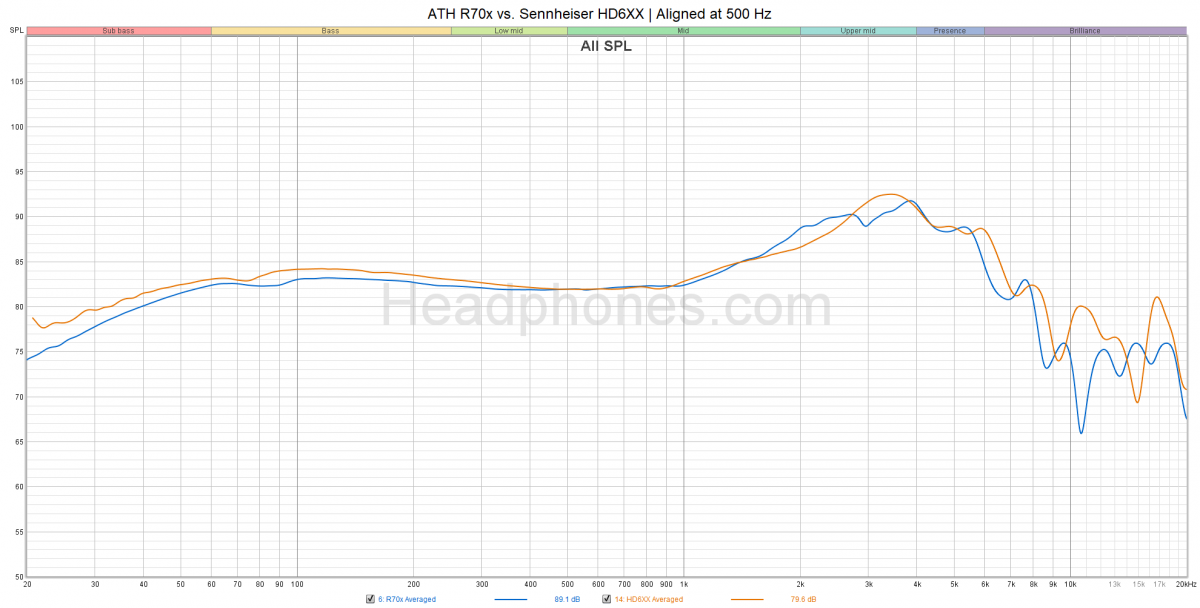 For the mid-fi segment, the HD6X0 and Sundara are the two most popular choices. I wrote about how they compare to each other in my Sundara review here and now the R70x appropriately joins the ranks.
For the mid-fi segment, the HD6X0 and Sundara are the two most popular choices. I wrote about how they compare to each other in my Sundara review here and now the R70x appropriately joins the ranks.
The tuning of the R70x is closer to the HD600 than the Sundara, with a similarly smoothed out midrange. In fact, the HD650 and R70x graph fairly similarly to one another while the HD600 flattens out the lower mids and fills in the mid treble a little more in line with my tastes. As such, the R70x is mellower than the HD600. In contrast, the Sundara has greater clarity at the cost of a bit of timbre. For its bass, the HD600 has a notably tighter midbass punch than the R70x’s more undefined nature. The Sundara however outdoes both of these dynamic drivers with better control in the low end. Between the three, I prefer the treble of the R70x the most. The Sundara’s is crisp and clear but has a crystalline timbre to it and may be fatiguing. The HD600’s feels like it gets messy at times. The R70x strikes a nice balance between the two while being the least fatiguing of all.
For technical performance, the Sundara wins out on almost all fronts. The competition between the HD600 and the R70x is much closer but I’d say the HD600 edges it out thanks to its sharper sound. However, the one place the R70x easily takes the crown is in its staging. The HD600’s staging is practically the poster child for the closed-in, 3-blob experience of headphones. The Sundara steps it up quite a bit but pales in comparisons to the R70x’s ability to sound open and immersive with its soundstage and exceptional imaging.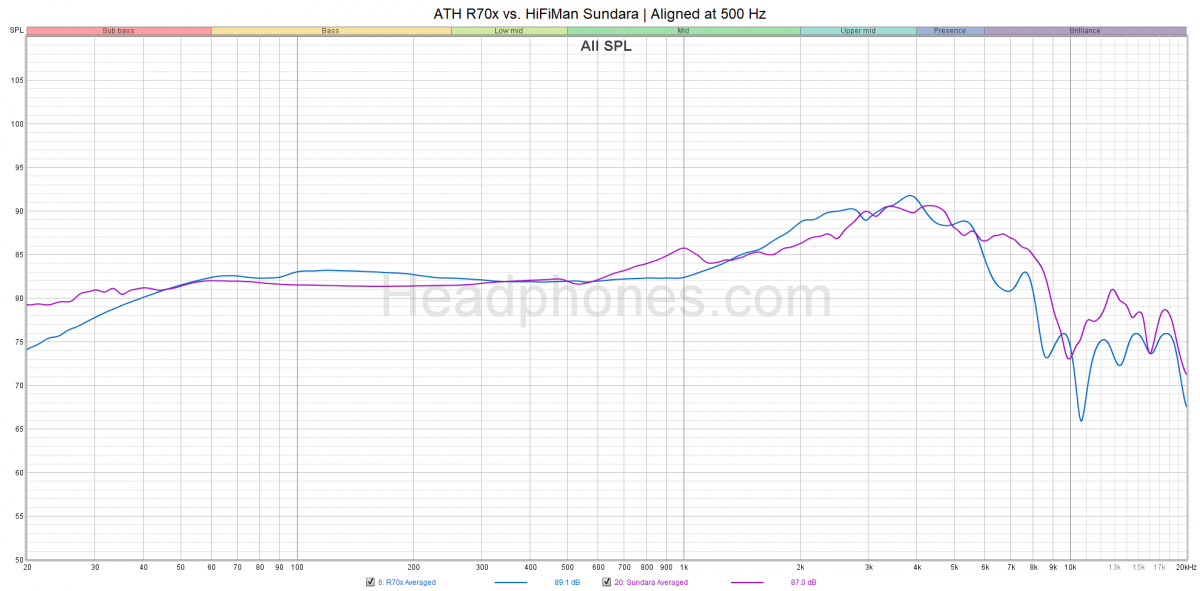 Bottom line
Bottom line
Tonality – HD600 >= R70x > Sundara
Technical Performance – Sundara > HD600 > R70x
Staging – R70x >> Sundara > HD600
Keep in mind that all three headphones are very good for the price. Though I may rate one headphone higher than another in some aspect, it’s really a matter of degrees rather than improvements of leaps and bounds. Rather than focusing purely on sound quality, consider your own specific use case and if there are any aspects that fit your needs. If you’re looking for a very comfortable headphone with great staging to use for extended periods of time such as for long gaming sessions, the R70x would be my choice. The Sundara is my pick for the best sound quality if you can forgive some of its timbral stumbles while the HD600 is the overall safest option if you don’t care too much for soundstage. However if you’re considering between the HD650 and R70x, I’d lean towards the R70x.
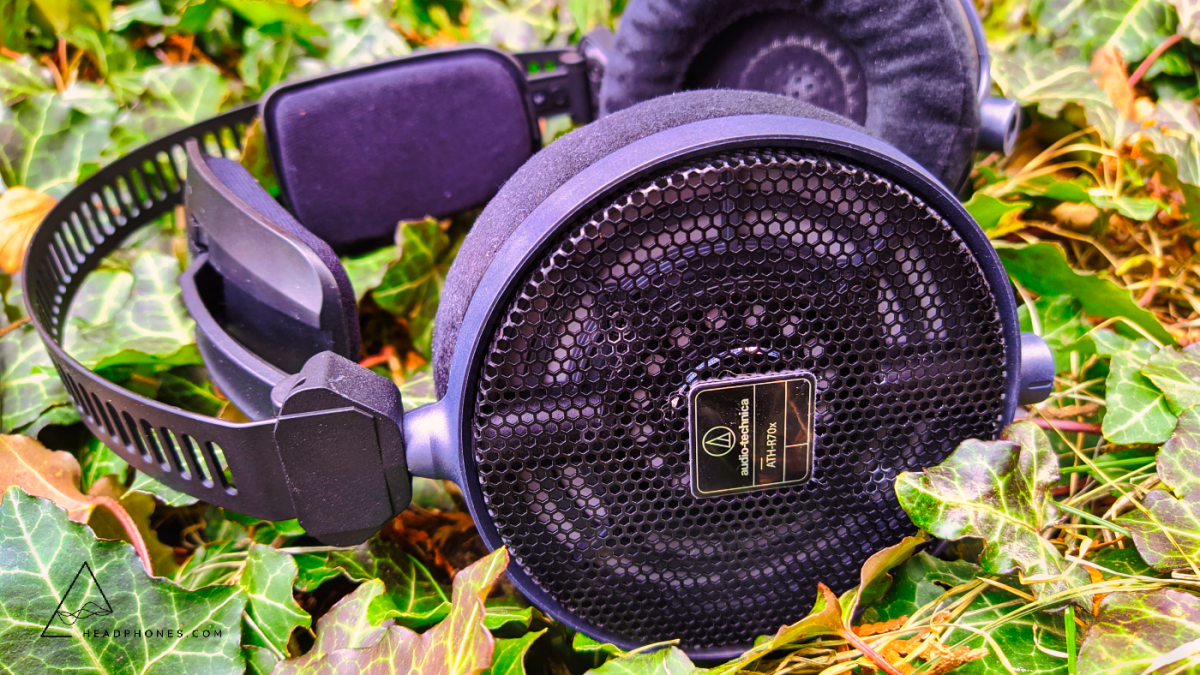
Should You Buy It?
Yes. The Audio Technica ATH-R70x is a headphone I can easily recommend. It differentiates itself from other headphones with its light weight and great staging experience while still being easy-to-listen and tonally pleasing. The comfort is not to be underestimated either. Though the wing design may seem funny, it really does relieve the headband pressure issue. Just putting on the HD600 for a quick A/B song comparison I can feel that headband pressure. At the end of the day, I likely won’t be swapping out my HD600 for the R70x for my personal collection. But perhaps in a different timeline if I had bought the R70x first, I’m confident I would’ve been just as happy.
-Fc-Construct
---
Buy the Audio Technica ATH-R70x at Headphones.com for the best available price.
Discuss the Audio Technica ATH-R70x on the HEADPHONE Community Forum here.
---
